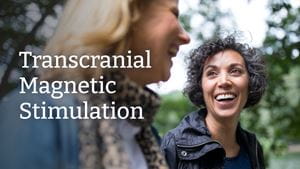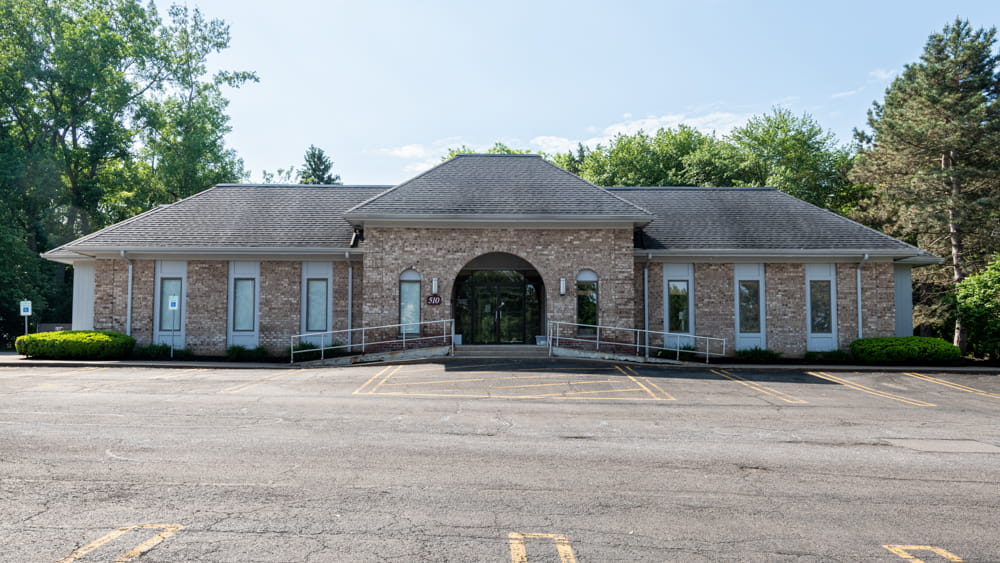
In the United States alone, there are approximately 16 million adults living with major depressive disorder, according to the Anxiety & Depression Association of America. There are many types of treatment available, such as talk therapy and medication.
However, some people living with depression are unable to make progress using these methods of treatment. The FDA approved a form of therapy called Transcranial Magnetic Stimulation (TMS) for patients who have specific types of persistent depression.
Adrian Leibovici, MD, is a behavioral and mental health specialist with Rochester Regional Health who explains the therapy and how it helps patients.
TMS is a method of stimulating the brain with small bursts of electromagnetic current in order to affect a targeted area on the surface of the brain. Approved by the FDA for use by behavioral health providers, this method is used to treat the areas of the brain linked to major depressive disorder in order to reduce symptoms of depression.
Behavioral health providers in the U.S. have been offering TMS for the last 10-15 years. Recently, more providers with Rochester Regional Health are being trained and are starting to accept patients for this treatment.
During each session, a patient will come into a room and be seated in a chair similar to a dentist’s chair. At the first visit, a supervising psychiatrist and a specially trained nurse will spend up to 45 minutes working to identify the area of the brain that needs to be targeted by the magnetic waves.
Once that process is finalized, an electromagnetic coil is positioned over the identified area of the patient’s brain and magnetic waves are sent to the brain for a total of about 10 minutes.
After the first visit, the sessions will be shorter since the positioning of the magnetic coils has already been determined. Each session will be run by a specially trained nurse; a physician is always on site as a precaution. The full course of treatment runs 5 days a week for 4-6 weeks.
Not all patients with major depressive disorder can qualify for TMS.
Patients who are eligible for this type of therapy need to be diagnosed with treatment resistant depression. This means they need to have tried four other medications – all of which have been resisted by the patient’s body. Patients must also have undergone talk therapy.
“TMS is not a first resort method of treating depression,” Dr. Leibovici said. “Using this particular type of treatment is reserved for patients whose depression persists through several different kinds of treatment.”
There are also some physical limitations for patients related to the use of magnets. This means patients cannot have:
Compared to medication and previous methods of treatment such as electroconvulsive therapy (ECT), TMS has few side effects.
Some of the side effects might include:
Anesthesia is not part of the treatment as it is with ECT. There is also a significantly lower risk of grand mal seizures – a type of seizure that can lead to a loss of consciousness and severe muscle spasms.
“There is no pain associated with TMS,” Dr. Leibovici said. “Sometimes people will read a book or watch TV during treatment since the side effects are so mild.”
Noticing how quickly things improve varies from patient to patient.
Some patients may notice progress in the first couple sessions, while others see it toward the end of the 4-6 week course of treatment.
All major insurances cover TMS, but patients need to show documentation that they have exhausted most other therapies before they can be approved for this treatment.
Patients can be referred from within the Rochester Regional Health system – both in-patient and outpatient locations – and from the Rochester community at large.
There are three psychiatrists with Rochester Regional Health who offer TMS right now; more are being trained. A psychiatric residency program linked to Rochester Regional implements TMS in its curriculum to teach future psychiatrists how to conduct this specific method of treatment.
Patients are treated at the Rochester Regional Health Psychiatric Therapeutics facility on Kreag Road in Bushnell’s Basin.
